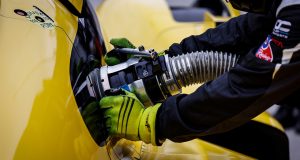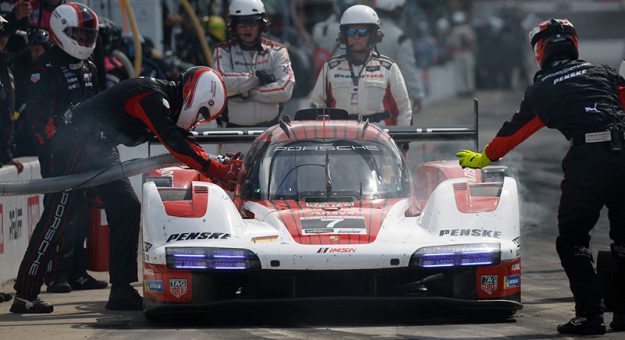Strategy is Paramount as Teams Manage Fuel and the Maximum Energy That Can Be Used During a Stint
By John Oreovicz
DAYTONA BEACH, Fla. – Whether your car or truck is powered by a gasoline or diesel internal combustion engine, electricity or even a hydrogen fuel cell, the concept of physically “filling it up with fuel” is clear and obvious.
The same goes for most racing cars. Up through the 2022 season in the modern era of the IMSA WeatherTech SportsCar Championship, it was pretty simple. The rulebook stipulated a class-specific time for filling up the tank with VP Racing fuel, no matter how large each competing car’s tank.
“That’s how we equalize it in a fuel-limited category,” explained Matt Kurdock, IMSA senior technical director. “In GTD (Grand Touring Daytona), for example, there are 10 different manufacturers fielding 10 different cars, and there could be 10 different engine sizes or fuel cell capacities, through Balance of Performance (BoP). They all have a (refueling) flow rate that equalizes the time to fill a completely empty fuel tank for the maximum capacity they are each permitted through BoP. If they came in to completely fill, they would all spend 40 seconds filling with enough fuel to provide a targeted fuel stint.”
The introduction of hybrid technology to the new-for-2023 Grand Touring Prototype (GTP) class complicates matters, even though the components that make up the hybrid energy storage and distribution system are standardized and common among participating manufacturers Acura, BMW, Cadillac and Porsche.
As before, IMSA utilizes BoP to limit the total power that each car is capable of producing. But the added element of electrification – and more importantly, how electric energy is created, stored and utilized – must now be factored in.
Using torque sensors mounted on the drive axles, IMSA can measure the total power being deployed by any GTP car at any given moment. Here’s where it gets more complicated: That power is now a combination of traditional “horsepower” from the car’s internal combustion engine (ICE), meshed with up to 240 additional horsepower provided by the electric motor in the hybrid system.
Not only does each manufacturer use a unique ICE – Porsche and BMW have chosen turbocharged V-8s, Cadillac a larger displacement naturally aspirated V-8 and Acura a higher-revving V-6 turbo with much smaller capacity – they are all permitted to write software to integrate the standardized hybrid hardware with their own proprietary energy management technology. The ultimate goal, as with hybrid-powered cars on the street, is efficiency – to travel the same distance using less fossil fuel.
Maximum Stint Energy and Megajoules
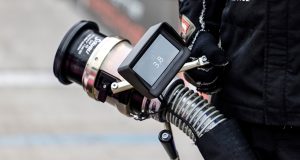
The solution for GTP was to move away from a fuel-limited formula to create a concept called Maximum Stint Energy. IMSA uses the data from the axle torque sensors to calculate the total energy used during a race stint and compares it to this maximum.
“We put a cap on how much energy a car can use during a stint,” Kurdock said. “They could use very little hybrid, they could use a lot of hybrid, and the energy we’re calculating is indifferent to it – because we’re looking at the energy at the drive axle. That could be a combination of electric and ICE.
“The objective with the hybrid system is to try to recoup some of the energy that you would waste through braking, and to be able to utilize that to extend how far you can go,” he continued. “The tools available to save fuel and not save fuel are quite a bit different when you start introducing hybrid hardware. But all the strategy elements that are there with our traditional fuel-regulated classes are still there with GTP.”
The difference now is that teams are no longer simply monitoring and managing how much fuel is in the car’s tank. They are aiming for a Maximum Stint Energy number that IMSA adjusts for every track – for the upcoming Motul Petit Le Mans at Michelin Raceway Road Atlanta, the number is 915 Megajoules (MJ) for Acura, 907 MJ for Porsche and 903 MJ for Cadillac and BMW. It’s up to the individual manufacturers how to manage that energy over time through a combination of gasoline and electric thrust.
Replenishing the Virtual Tank
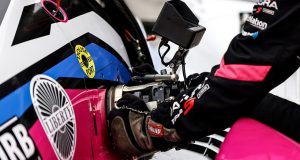
So, what actually happens when a car makes a pit stop to refuel – or more accurately, pits to replenish its virtual energy supply? Time is the key.
IMSA and the competitors are fully aware of how much energy they are using during a stint, and that expended energy can be replenished at the next pit stop. There is a calculation for the amount of virtual energy replenishment versus time which is equitable for all competitors. Teams have almost complete freedom to manage the amount of traditional fuel, and if their car is particularly efficient in its use of electric power, they may not need to completely fill the gasoline tank.
“When the fuel probe is plugged in, we’re counting replenishment,” said Kurdock. “We’re filling this virtual tank. We are just counting time that the proximity sensor is plugged into the car. The refueling rate is not controlled. They are free to add fuel. It really is up to the teams to manage that. We are just regulating how long the car is essentially stopped in its pit box with the fuel probe plugged into the side.
“All the strategies are still there that there would be with a fuel-limited category like GTD where you can short fill to try to get around someone, and then you have to manage your fuel consumption,” he added. “The same thing is true for GTP. You can leapfrog someone in the pits, but you’re going to have to manage your energy, potentially, and give up some lap time doing that.”
What happens if a competitor runs its virtual tank dry? The car may still be running, with gas in the tank and charge in the battery.
“The teams have the same information as IMSA,” Kurdock noted. “There are significant penalties in the rulebook preventing anyone from using up the energy (called an energy deficit). You can’t use more than you’ve been allotted. It’s a very steep penalty: a mandatory stop plus 100-second hold in the pits. It’s the equivalent of being stopped on the course without fuel, that’s why that penalty is so rigid.”
The Strategy of Managing Virtual Energy
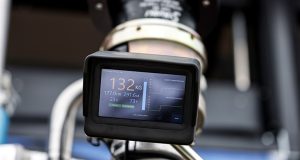
The brave new world of managing virtual energy gives GTP competitors a host of new tools and strategies to work with. The drivers are certainly kept a lot busier, constantly working with engineers to make adjustments to maximize performance or efficiency.
“It’s something that we’re very much aware of,” said Sebastien Bourdais, co-driver of the No. 01 Cadillac Racing Cadillac V-Series.R. “We can pretty much pick how much fuel we actually put in the car, so it really is virtual energy. It kind of opens up different strategies. We’re saving energy the same way.
“It’s just a matter of a different factor. You obviously keep an eye on the amount of fuel you have in the car. But you mostly have to keep an eye on the energy you have left to finish the race. How much regen you get and how you use it is impacting the energy per lap, and that is governing everybody.”
IMSA is working to develop technology that will allow fans at the track and broadcast viewers at home to see how much virtual energy each competitor has at any given time. The actual amount of fuel every car uses, and how it creates the power measured at the axle between gasoline and electricity – which by rule cannot exceed 520 kilowatts (kW) – will remain closely guarded proprietary secrets. But having any kind of visual representation of the virtual tank data will help fans understand how a race is unfolding and the strategies being employed.
“The moment electrical power is added to a vehicle, it brings complications to everyone,” Kurdock said. “But if we break it down to what are we trying to do – trying to give the drivers and teams the tools so if they want to push and use up what energy they have, if they want to trade endurance for pace – they can do that, and that hasn’t changed.”
